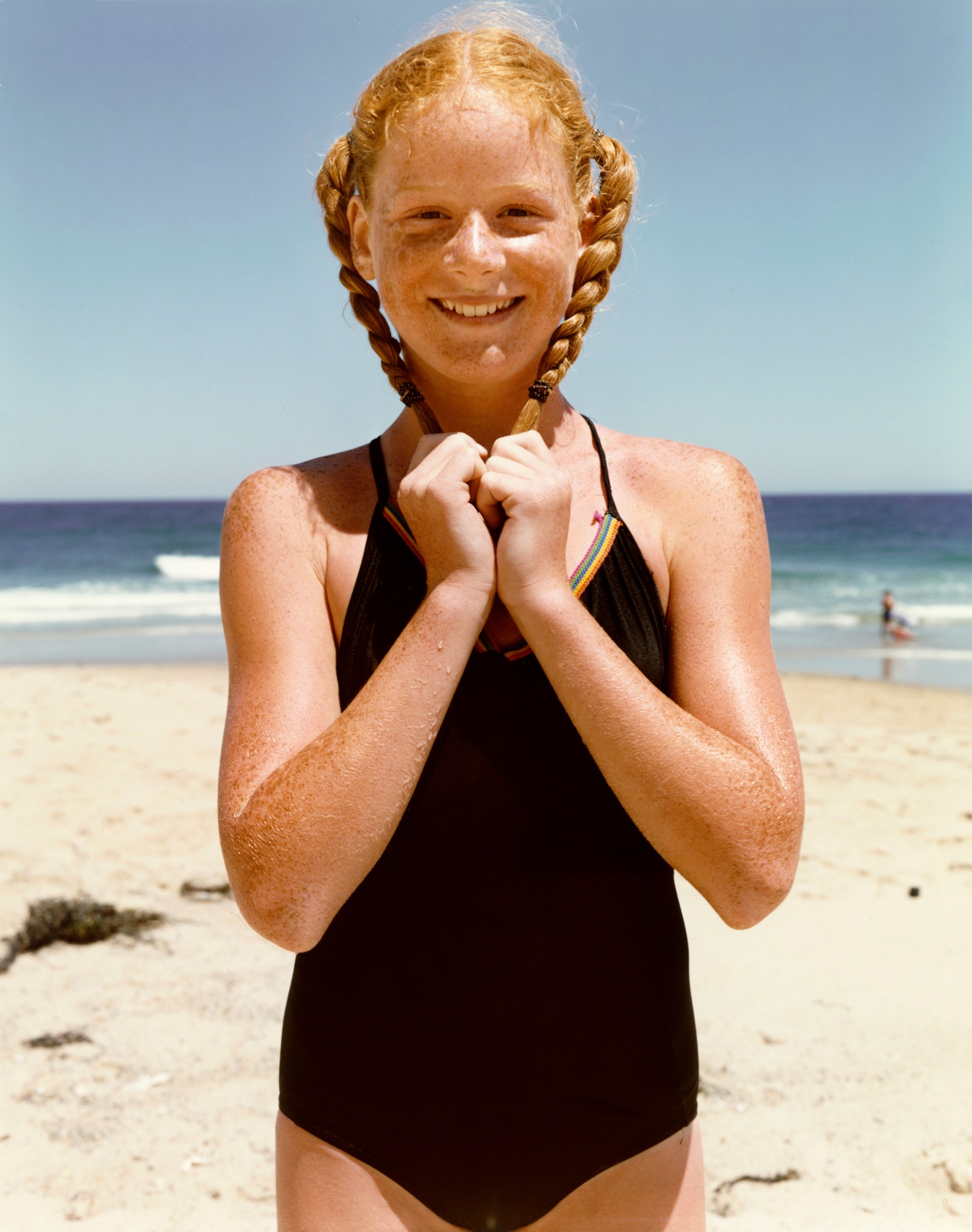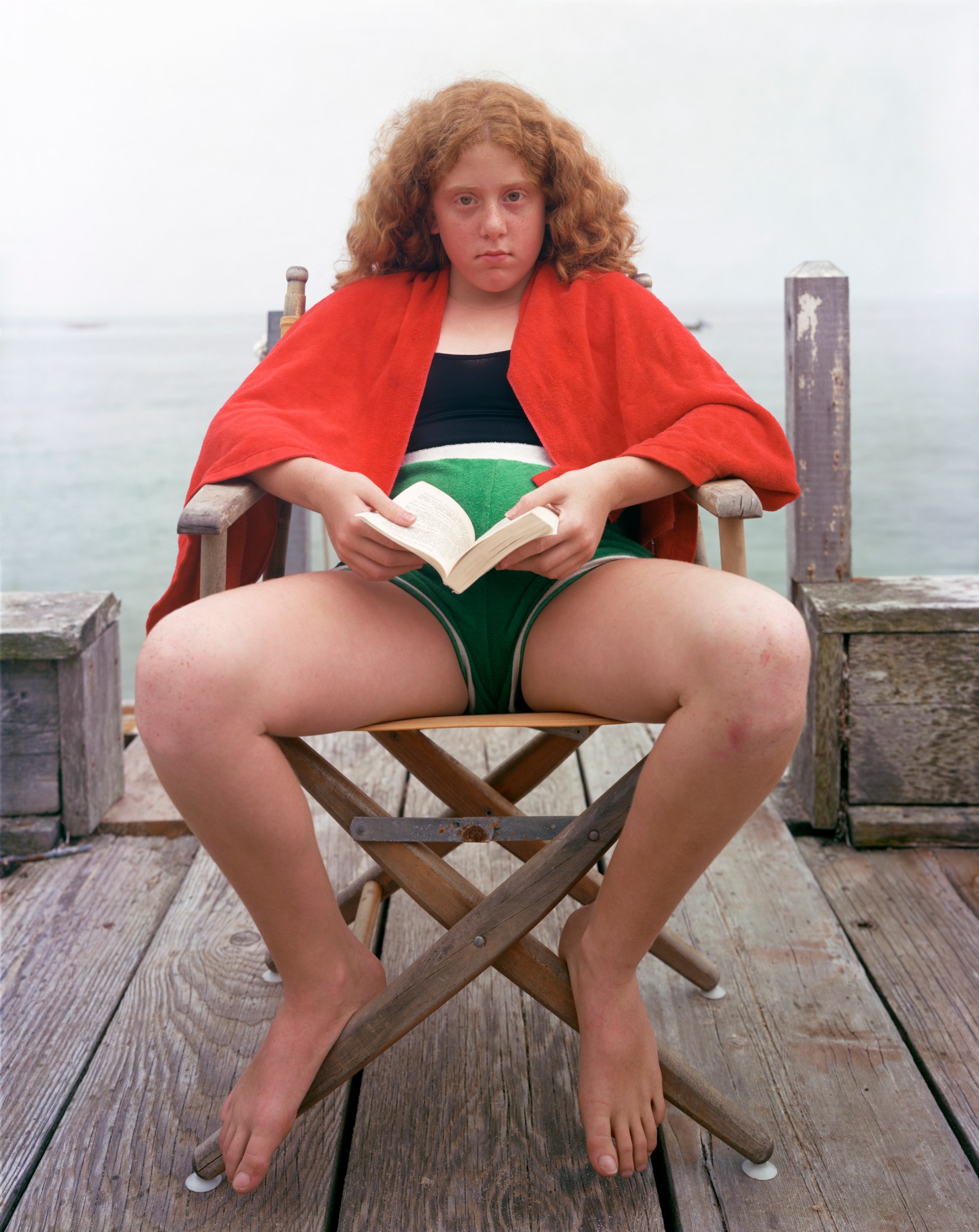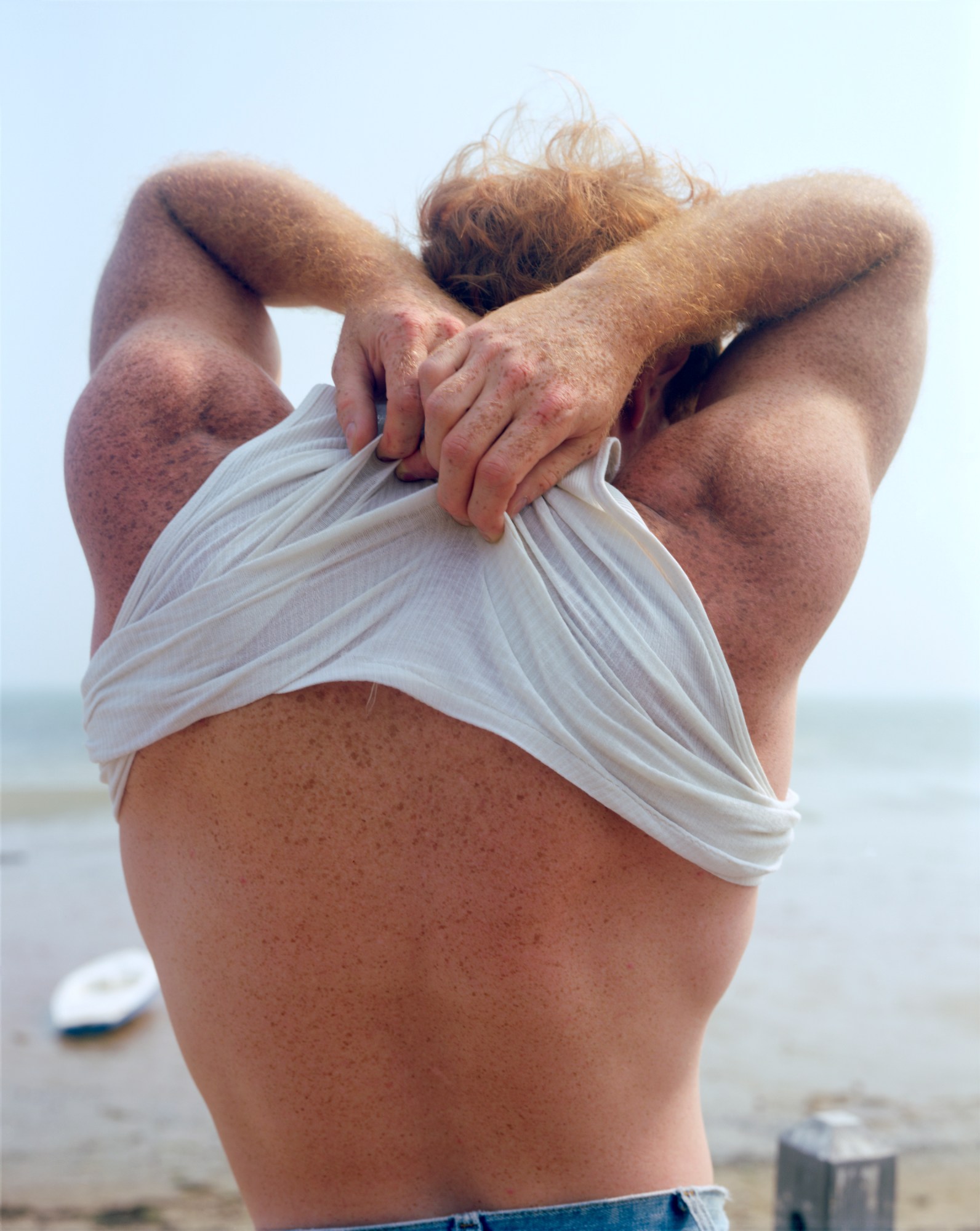When Joel Meyerowitz photographed redheads back in the 1980s, he got a whole lot more than a few quick snapshots of flaming red hair. Stood behind his six-foot-tall wooden camera, he asked about their lives and listened to story after story of verbal abuse. “Freckle face” and “carrot head,” were just a couple of the putdowns repeatedly hurled at them. But he heard, too, of their sense of personal victory at having overcome these cruel moments.
To this day, Joel remembers their responses. “Almost all of them said to me, now that I’m, you know, 25, I love it. I know how special I am, I know how attractive I am.”
You can see it in the pictures. A girl pulls her plaits around her smile, a guy lifts his shirt to proudly display his freckled back. They own it 100%. These are empowered redheads, and Joel was there to celebrate this journey to self-love.

The project — Redheads — actually grew from a broader series of portraits that Joel was making in Cape Cod during the 80s. He was leafing through his contact sheets when he noticed that 30% of the pictures he shot were of subjects with red hair. Cape Cod was a popular summer spot among the Boston Irish, so that influx brought a lot of ginger hair with it. The observation led him to go deeper, and quickly he ran an ad in the local paper, the Provincetown Advocate, that read: “REMARKABLE PEOPLE! If you are a redhead or know someone who is, I’d like to make your portrait, call….”
Of course, he wondered, why the interest in redheads? There was something in the pictures, how summertime illuminates them. “Their skin becomes more freckled, their hair is brighter and sparkly,” he says, fascinated by how beautiful they appeared glowing against the blue sky. A short while later, new subjects began coming up to his deck, “bringing with them their courage and shyness, their curiosity and dreams.”

Joel had zero interest in doing a detached study of redheads, placing any he could find in front of his lens. That would be too surface level. He had to have that human element. “Every single redhead that I stopped and selected out of the flow of life were the ones that somehow had a strong impulse for me,” he says, “they made me feel my own human interest in them. It wasn’t just the colour of their hair; it was something about the way they carried themselves, what they projected.”
Part of that deeper connection with his subject came from chatting to them and asking questions. “It wasn’t an interview in the strict sense,” he says, “but as I spoke to them, I would also ask, ‘How was it for you as a kid being a redhead?’ Almost all of them had the same story, ‘Oh man, I hated it when I was a kid; everybody was picking on me because of my hair; I tried to disappear, but I couldn’t because my head stood out’.”

None of them wanted to be known for their “carrot top”, he says. “For the most part, it gave them a kind of notoriety that was difficult,’ he says. They all had this shared experience of what it’s like to be a redhead in a society dominated by blondes and brunettes.
In fact, only 2% of the world’s population has red hair. Did Joel think of his project as a way of celebrating a kind of overlooked beauty that, especially at the time, wasn’t dominant in movies and other media? “It was almost to help me understand the very dimensions of beauty,” he says. “It isn’t only a classic pretty face, but it is an emanation from within that gives beauty or some kind of magical property to another human being, and we change our understanding of the nature of beauty.”

How does he get that “emanation from within”? It could be in the way he approaches people. He has a presence that he describes as joyous and openhearted. Even as I talk to him, Joel has a palpable energy that’s very infectious. He’s not, in other words, coming at his subject like a tank, all guns blazing. “I don’t have an ulterior motive,” he says, “I’m this open-eyed joyful person who comes over and says, ‘Wow, I see you, and I need to make a portrait of you’.” It also helped that Joel approached his subjects with an absurdly large 19th-century camera, which would never fail to arouse curiosity.
Over three decades have passed since the project (the first edition of the book wasn’t published until 1990), yet Joel says it has a special place in his heart, and an impulse has remained deep inside him. “Every time I see a redhead now, I have a little heartstopping jump like, ‘Oh, if I was still doing that work, this person would be a candidate’.”
In the new edition of the book, he reflects on what he learned from the redheads he met. “You could say that they had been baptized by their fire, and this shared experience had formed a ‘blood knot’ between them all. I had begun making portraits with the intention of photographing ordinary people. Redheads, it turns out, are both ordinary and special”.
‘Redheads’ by Joel Meyerowitz is published by Damiani www.damianieditore.com at £45.


